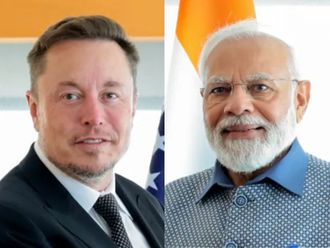In many ways, cyberspace has become just another place to do business, with discussions dominating about browsers and plug-ins, rather than the consumer experience. Especially since most retailers are still feeling the brunt of the erosion of profit margins.
From crowd sourcing to virtual reality, there has been a dominant push by corporates to enhance the value for the consumer. But on the available data, there are two variables that appear to stand out — pricing pressure and a concentration of power.
While the internet may be a decentralised communications system, it has evolved into a centralised network with a few players dominating the ecosystem. Google accounts for nearly two-thirds of web searches, and accordingly, the results of these searches also become somewhat homogenous.
While there is a process for search engine optimisation, do a search for any subject and you’re almost guaranteed to find Wikipedia at or near the top of the list of results. This is not difficult to understand, given the feedback loops that exist from computer algorithms that direct people to popular sites, thereby making them even more popular.
This has rendered a tremendous challenge to new start-ups. Alternatively, it has also made the activities of the larger players easier, as they snap up sites that become somewhat popular. This increasing concentration is similar to what happened in the brick-and-mortar world with a proliferation of malls and nearly 70 per cent of the tenants being the same brands.
Only recently has there been a swing of the pendulum in an opposite direction, whereby smaller stores have become somewhat more visible in certain areas. The problem the online industry faces is that, unlike the physical world, its far more difficult to detect acts of control or curation or for that matter concentration.
What is a small retailer to do to stand out from the crowd? For that matter, what can the consumer do in order to capitalise on the so-called “long-tail” effect? Stores that may cater to the eclectic, but just don’t show up in traditional search engine algorithms?
Even as social media channels proliferate, we see the dominance of the larger brands in each and every segment. Even though there has been considerable experimentation (more so than in the physical space), there is a feeling of larger brands taking over the ecosystem. While this has come at lower prices, this has led to an extreme automation, that has left the personal touch remain out in the wilderness.
Not surprisingly, in Net 2.0 (where there is more than a transfer of information, but a transfer of value), there appears to be greater demand for that personalised experience. Augmented reality appears to be the better platform, more so than virtual reality.
These touch points then become the focal points of the store, as well as the story. Even though its early days, what already appears to be happening is that as the larger telecom players, as well as marketplaces enter the arena, various platforms will be exploited based on a mining of data of consumer preferences.
We have already seen smaller players sell their data to the larger outfits; blockchain technology now threatens to even render that business model obsolete in the near term.
We recommend a focus on the bespoke; an emphasis on niche markets that do not show up in algorithmic searches. It is in these areas where there has been the greatest return on equity for the online retailer. Yet curiously, not enough experimentation has been done with a focus on localisation of the product offering with a superior customer experience.
Instead what has happened is an emphasis on price, which now looks to have reached the limits of its possibility. However, by definition, niche players operate at the fringe elements of the marketplace.
What this implies is that wave after wave of creation will lead to further consolidation. Eventually what appears likely is the domination of four to five large players in the UAE and the region, much as what we have seen in the rest of the e-commerce retail landscape.
— The writer is the Head of Digital Operations at GCP.












